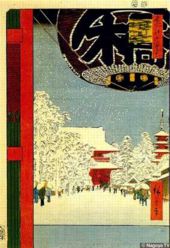

The ASACUSA logo is ...
How you create an antiprotonic helium atom
ASACUSA
ASACUSA stands for Atomic Spectroscopy And Collisions Using Antiprotons; spelt with a 'k' (as Asakusa) it is the name of one of the oldest quarters of Tokyo (and there are a lot of Japanese physicists in the collaboration!)
This experiment will build antiprotonic helium atoms and will study them using laser spectroscopy techniques.
Why, and what is an antiprotonic helium atom?
A normal atom of helium consists of two electrons orbiting around the nucleus. If you replace one electron with an antiproton, you obtain antiprotonic helium.
Such atoms are extremely easy to create -- it is enough just to bring fast-moving antiprotons to rest in ordinary helium. The stationary antiprotons readily displace electrons from neighboring helium atoms, and remain bound in their place, traveling around the helium nucleus in a slightly elliptical orbit.
In most of the atoms, once this situation in reached, the antiproton falls into the nucleus so fast (a trillionth of a second!) that scientist have not time to do anything!
But antiprotonic helium is special, and sometime (about 3% of the cases) its atoms can live up to several millionths of a second, a time long enough for scientist to look at it carefully.
And since the properties of any atom are determined by the properties of its constituent particles, this unusual atom constitutes an extremely powerful microscope through which the antiproton can be studied in minute detail.
The way ASACUSA measures the properties of antiprotonic helium atoms is by the powerful and accurate tools of laser spectroscopy.
What is laser spectroscopy?
|
(ASACUSA
- page 1 of 2)
| Next > |


